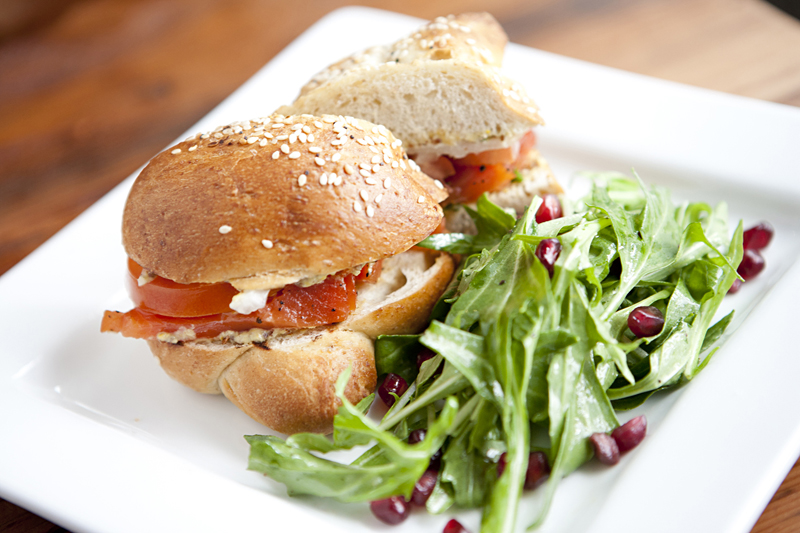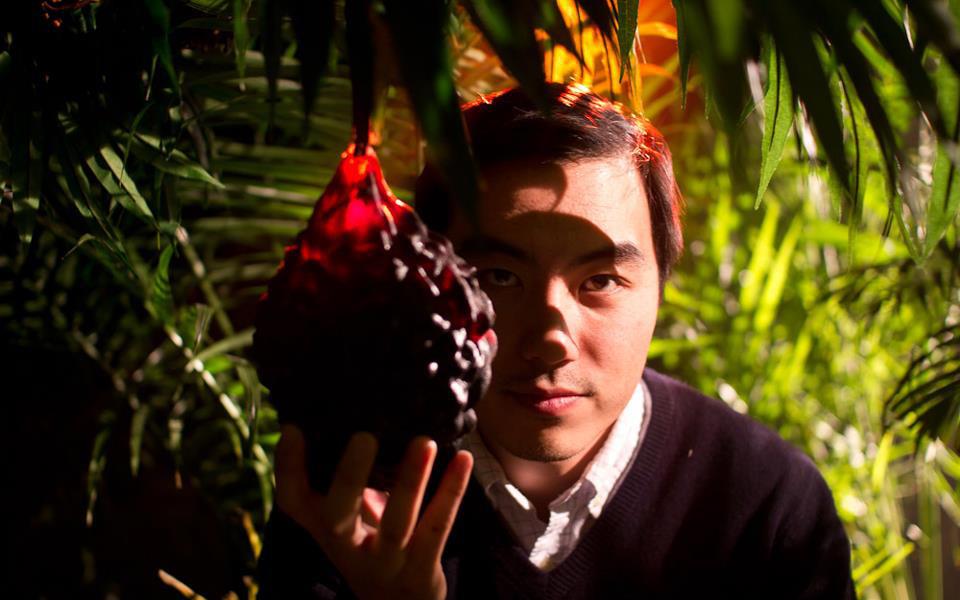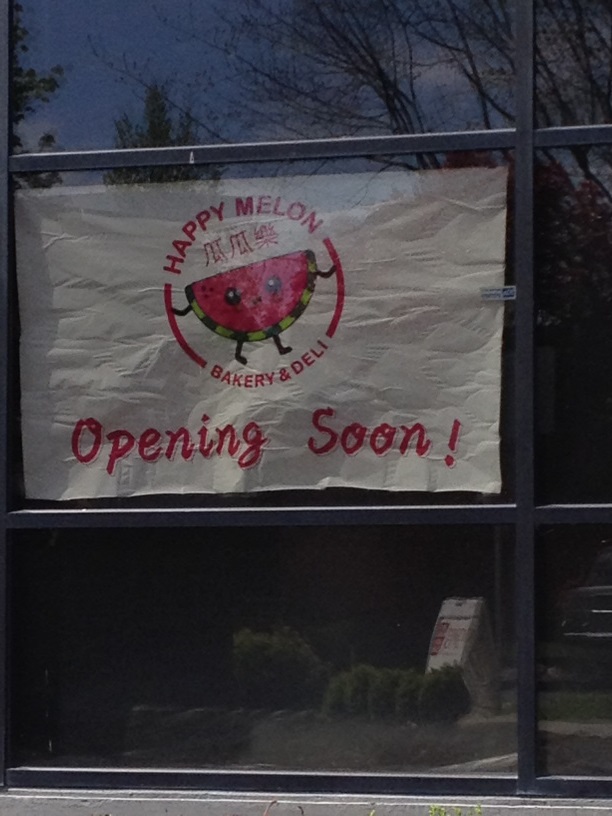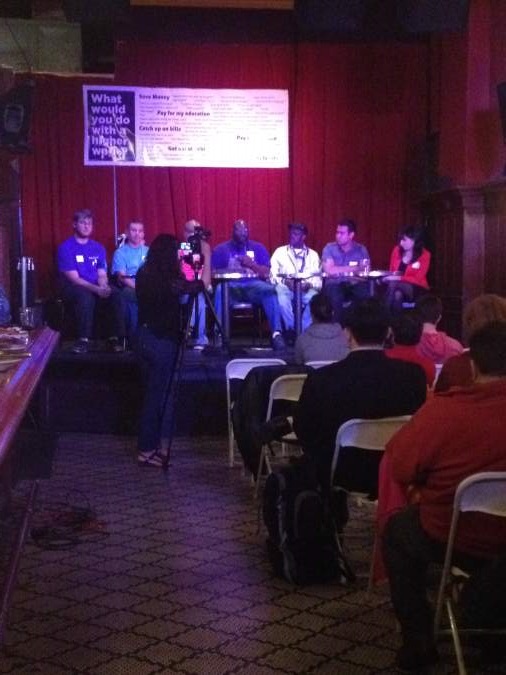Ever since The New York Times exposed the foibles of self-appointed food paparazzi on the front page of its dining section, culinary folk have been yammering about the propriety of restaurant photography. Food writers have taken to interviewing each other about the phenomenon, asking whether it’s ever OK to use a flash, or set up a tabletop tripod, or make dining companions hold their forks until a dish has been positioned to catch the light just so.
It’s not a debate likely to inflame patrons at Tanglewood Supreme, a self-effacing seafood bistro which four months ago opened in a tidy Magnolia alleyway. That’s not to suggest the dishes at Tanglewood aren’t photogenic—on the contrary: When sunlight wafts through the south-facing windows during a busy lunch service, ribbons of housemade pappardelle smudged with chili and grapefruit, hillocks of red quinoa flecked with ricotta salata and bright-green Brussels sprout leaves, and sunset-pink salmon tartare gleam so attractively that even the drowsiest appetites are jolted awake by a glance around the compact room. But bloggers generally don’t bother toting their cameras to Tanglewood because the restaurant stands outside the realm of razzmatazz.
Chef Jeffrey Kessenich, a Brasa vet and smart hire by owner Kent Chappelle, isn’t so taken with his philosophy, ingredient sourcing, and technique that guests are forced to acknowledge his talents when all they want is a decent green salad. Nor are prices ratcheted up to announce artistry, or account for it: A seven-course tasting, drawn directly from the menu, is a remarkably reasonable $40. While there’s plenty of deliciousness available, dinner at Tanglewood is always presented as a meal, not an event, which is probably why the restaurant languished for months without much online love.
But there’s nothing wrong with a restaurant that doesn’t mug for the cameras (or make a noisy fuss about the eaters armed with them). Although the term “neighborhood restaurant” is a mite too rumpled and beery for what’s happening at Tanglewood, the tailored 35-seat bistro is admirably willing to recede into the background when Magnolians want to celebrate a birthday or host visiting in-laws. In many ways, Tanglewood Supreme feels like a perfectly ordinary expression of upper-middle-class-hood, in the fashion of golden retrievers and Toyota Priuses. What distinguishes it from other restaurants with open kitchens and $22 entrees—and what matters most to eaters on the opposite end of the Magnolia Bridge—is the consistently high caliber of its food.
Tourists who’ve glimpsed an area map are often surprised by the seeming scarcity of seafood restaurants in Seattle. Beyond the sophisticated oyster houses, outlets of local chains with multiple locations, and Tom Douglas’ paeans to the ocean, the category falters: There aren’t any East Coast–style shacks where fishermen feast on their own catches or quiet cafes with fish-centric menus, a ubiquitous format around the Great Lakes.
Chappelle hoped to attend to the municipal seafood gap with Tanglewood. (The strange name was borrowed from a casserole his mother mastered; inexplicably, the preparation isn’t on the menu. I’d love to see at least a tribute version alongside the ceviche and chicken thighs served for happy hour.) If there’s one dish that demonstrates his success, it’s the Alaskan weathervane scallops.
Scallops are extraordinarily popular with American eaters, whose consumption of the plump bivalves is bound only by budget. As The Boston Globe reported last year, grocery shoppers commonly opt for frozen scallops treated with chemicals and even more water than their packaging reveals: Bay scallops in a bag sold at a Massachusetts Walmart for $5.98 clocked in at 91 percent moisture. By contrast, weathervane scallops—the largest in the world—are frozen at sea, before food chemists can mangle them with additives.
Weathervanes—considered a “best choice” by Monterey Bay Aquarium’s Seafood Watch program, which blesses the fish whose harvest is least harmful to the environment—offer scads of sweet, buttery flavors. Kessenich accepts the gift gracefully, searing the scallops so their caramelized edges frame the luxe meat, soft and supple as a late-summer peach. Unlike frozen scallops, which are weirdly white as chalk, weathervanes have an ivory cast that looks lovely against the gently spiced green curry underscoring the shellfish. The composed plate’s Asian stylings are echoed by split baby eggplants, airy naan puffs, and a spray of macadamia nuts.
Tanglewood is at its best when it’s roaming the globe, frying up jaunty sweet-potato arancini or saucing a tender hanger steak with pomegranate. The dishes with less exotic provenances were among the few that disappointed: The King salmon used for the tartare was beautifully fatty, but the fish was slugged with too much additional oil, and its clean flavors were partially clouded by the horseradish crackers and pickled fennel that completed the presentation. A simple soup of celery root and potato, drizzled with creme fraiche and watercress pesto, was too sheer and acidic for a wintry day. It might have made a fine sauce for a hunk of halibut.
Still, most of Tanglewood’s problems would be fixed with a few phone calls. The restaurant could stand to schedule another runner on weekend nights (on my first visit, our friendly server was so flustered by simultaneous seatings that she had to double back twice to clarify our drink orders). Tanglewood’s complimentary bread is a cold, hard, and bland reminder that good bread is worth the price. And I’d much rather ante up for a pat of quality butter or splash of fresh olive oil than soak my slice of bread in the balsamic vinegar that Tanglewood provides.
Finally, while a slim selection of spirits makes sense in a restaurant that needs to save every kitchen counter seat for dining customers, Tanglewood’s wine list doesn’t measure up to its inspired cuisine. Although the menu emphasizes delicate shellfish and Thai touches, such as coconut milk in a red risotto and a lemongrass coulis scribbled alongside bits of flash-fried yellowfin tuna, the only white wines available are an oaked chardonnay, sauvignon blanc, and pinot gris. None of the whites or the three listed reds are priced at more than $32, but affordability is small consolation when trying to figure out what to drink with a smart dish of whole Hawaiian blue prawns poached in a vanilla-sweet grapefruit nage.
Fortunately, wine’s less of a concern at lunchtime, which is when you have to visit Tanglewood if you’re after the salmon pastrami. The terrific salmon, seasoned and cured for four days before cold-smoking, is thickly sliced and smeared with whole-grain mustard. Online food chroniclers might want to get a picture.
hraskin@seattleweekly.com
PRICE GUIDE
Arancini $5
Salmon tartare $6
Salmon pastrami $10
Prawns $22
Scallops $24








